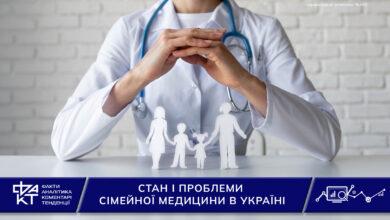A heart that cannot withstand war: how stress destroys children’s health

War robs children not only of their childhood, but also of their health. Constant danger, sirens, explosions, loss of loved ones – all this leaves deep traces not only in the memory, but also in the heart. A child’s body, which is still forming, is vulnerable to the destructive force of stress. Doctors are increasingly diagnosing rare heart diseases in young patients, which were previously common mainly in the elderly.
“Broken heart syndrome” arising from excessive emotional stress has ceased to be just a metaphor. The war started a process, the consequences of which will be felt for many years to come. Cardiovascular diseases in children have become a terrible echo of the horror experienced, and doctors note an alarming trend: the number of cases continues to grow.
Disappointing statistics
Cardiovascular diseases remain one of the leading causes of mortality and morbidity in the world, and Ukraine, unfortunately, is no exception. According to the WHO, almost a third of all deaths on the planet are caused by diseases of the heart and blood vessels. In Ukraine, this statistic is even more alarming: according to data According to State Statistics and research by the Ministry of Health, cardiovascular diseases are responsible for 60–68% of all deaths. In addition, it is no longer possible to claim that heart disease is a problem only for older people. The war made its adjustments, and now in the risk zone:
- people who survived occupation or hostilities. Constant fear and anxiety undermine the work of their hearts;
- those who lost loved ones or homes. Grief and hopelessness become the starting mechanism of the disease. According to the data research “The burden of disease among forcibly displaced Ukrainians as a result of the Russian invasion in 2022”, more than 2.63 million displaced persons (20%) were diagnosed with cardiovascular diseases;
- military and veterans who constantly experience excessive stress on the nervous system combined with physical exhaustion. In addition, specialists point out, that 39% of deaths among the military occur precisely because of acute cardiovascular failure. Cases are often recorded when military personnel with cardiovascular diseases, such as heart failure of the first or second stage, are admitted to service where there is no constant access to qualified medical care;
- children and teenagers, which is the most shocking. For the first time in the history of Ukraine, cases of heart disorders in very young patients are recorded.
Ukrainians often face hypertension, coronary heart disease, heart attacks and strokes, which significantly affect the quality of life. The body’s stress response in war conditions becomes chronic. A person is constantly in a state of tension, which leads to excessive production of adrenaline and cortisol. These hormones in the long term destroy the cardiovascular system, provoking:
- arterial hypertension – uncontrolled pressure jumps that can lead to strokes;
- arrhythmias and heart failure – the heart works with interruptions, which threatens life;
- thrombosis and heart attacks – due to increased blood coagulation caused by stress.
Doctors also recorded an increase in cases of myocarditis and other inflammatory processes in the heart muscle, caused not only by viruses, but also by chronic exhaustion of the nervous system. Relentless statistics record from 460 to 500 thousand deaths from cardiovascular diseases every year. In 2023 in Ukraine from cardiovascular diseases died about 67,000 people — that’s 11.3% more than in 2022. Coronary heart disease accounted for nearly half of these deaths, claiming more than 30,000 lives. Although men have a higher risk of developing heart disease, it increases significantly after menopause in women. In addition, the consequences of the war and the COVID-19 pandemic have led to the fact that cardiovascular diseases in Ukraine are “getting younger”. If earlier heart attacks and strokes most often occurred in people older than 60 years, now these diagnoses are more often made at the age of 45-50. And for in words Children’s cardiologist of the Chernihiv Regional Children’s Hospital Kateryna Saranchuk, the American Cardiology Association has already recognized psychiatric diseases as one of the main risk factors for the development of heart diseases.
In turn, the doctors of Lviv MTG published disappointing statistics data, according to which, since the first year of the full-scale invasion, there has been an increase in the number of registered diseases of the circulatory system:
- in 2022 – 25,284 cases;
- in 2023 – 31,842 cases.
An increase in the number of people with newly registered hypertension of all forms to 11,507 people in 2022 and 16,810 people in 2023 was also noted. 95% of patients seeking help are diagnosed with hypertension in the first place, atherosclerosis in the second place, and arrhythmias in the third place.
However, in addition to common pathologies, there are also rare heart diseases that deserve no less attention. One of the most telling examples is the Takotsubo syndrome, or “broken heart syndrome”, which is increasingly being diagnosed in different parts of the planet. The prevalence of Takotsubo syndrome is 2-4% among all patients and 5-6% among women hospitalized with a diagnosis of acute coronary syndrome. Chronic stress in adolescence can provoke a violation of blood circulation in small vessels, support autonomic dysfunction, contribute to transient myocardial ischemia and Raynaud’s angiotrophoneurosis, and also lead to the occurrence of a rare disease at an early age.
Even 20-30 years ago, Takotsubo syndrome was considered exotic and was rather an interesting finding for cardiologists. It simulates a heart attack: a person suddenly has chest pain, shortness of breath, changes in the cardiogram, but at the same time the arteries remain clean. No blockage or blood clots. The reason is not mechanical damage, but the effect of excessive stress on the heart. Since the early 2000s, the number of cases of Takotsubo syndrome has more than doubled. Women after the age of 50 were considered to be the most vulnerable to it, but recently, the diagnosis is increasingly being given to young people, men and even teenagers.
How cardiologists discovered “broken heart syndrome”
Takotsubo syndrome was discovered relatively recently — in 1990 in Japan. Cardiologists noticed a strange group of patients: they came to hospitals with all the symptoms of a heart attack – chest pain, shortness of breath, changes in the ECG. But during a detailed examination, it turned out that their coronary arteries were not blocked, and the heart, instead of an even contraction, took on a bizarre shape. Japanese doctors noticed that during an attack, the left ventricle of the heart takes the shape of an octopus trap (“takotsubo” in Japanese – ed.) – a rounded bottom and a narrow neck. Due to this similarity, the syndrome was given the appropriate name. After studying the cases, it became clear that all the patients had experienced a strong emotional or physical stress before the attack: the death of a loved one, an accident, a major operation, or even excessive joy.
Studies have shown that under the influence of stress hormones, the heart fails for a while. Its upper part continues to shrink normally, and the lower part expands and ceases to work effectively. This creates a dangerous condition similar to a heart attack, although the arteries remain clear.
There is currently no cure for Takotsubo syndrome. But doctors in different countries are developing strategies to reduce risks and improve treatment. Previously, Takotsubo syndrome was often confused with a heart attack, which made treatment difficult. Now, with the development of cardiac MRI and more detailed cardiac monitoring, doctors can more quickly and accurately identify this pathology. Because the arteries in such patients remain clear, classic heart attack treatments (such as stents) do not work. The main approach is medical support (beta-blockers, sedatives, antidepressants – ed.) and rehabilitation of the nervous system.
In some clinics in Europe and the USA, patients with Takotsubo syndrome are now prescribed psychological consultations, meditation courses, and cognitive-behavioral therapy. Studies show that controlling stress levels significantly reduces the risk of disease recurrence. Countries with well-developed preventive medicine focus on teaching people how to manage stress. For example, in Japan they are actively implementing “forest therapy” – walks in nature as a way to stabilize the nervous system. In Scandinavian countries, at the state level, a healthy balance between work and rest is promoted, which helps to reduce stress levels.
Unfortunately, Takotsubo Syndrome is not the only unique cardiac pathology. Medicine already knows a few more rare but dangerous cardiovascular diseases:
- Minokawa’s disease is a condition when a person experiences a myocardial infarction, but without classic blockage of arteries. The reasons can be different: vascular spasm, microthrombosis or inflammation. It is still difficult for doctors to identify a single reason why diagnosis and treatment remain problematic;
- Brugada syndrome is a rare genetic disorder that can cause sudden cardiac death, especially in young people. The disease disrupts the electrical conduction of the heart, which can lead to fatal arrhythmias. It is often found accidentally on an ECG or after sudden fainting spells;
- Long QT syndrome is another genetic pathology in which the heart does not have time to fully recover between beats. This can lead to sudden arrhythmias, dizziness, fainting and even sudden death;
- spontaneous rupture of a coronary artery – an unexpected rupture of the wall of a coronary artery that can cause a heart attack even in young, healthy people with no risk factors. Most often occurs in women after childbirth or during hormonal changes;
- stress-induced left ventricular cardiomyopathy (also “cut off heart syndrome”) – this condition resembles Takotsubo syndrome, but in it the heart does not take on the shape of an octopus trap, but instead its function declines so dramatically that heart failure occurs.
Science continues to discover new heart syndromes related to stress, genetics and unexpected physiological reactions of the body. A key problem is that these diseases are often ignored or confused with more well-known pathologies. However, with the development of diagnostics (genetic testing, MRI of the heart, detailed analysis of electrocardiograms), doctors have a better chance of detecting these rare conditions in time and saving patients’ lives.
As we can see, the war slowly and invisibly destroys the hearts of those who survived. Stress, once considered a temporary response to danger, has turned into a chronic poison that eats away at the body from the inside. Doctors record the growth of rare heart pathologies, which were previously isolated cases. Young people who have never had heart problems suddenly find themselves in intensive care. Children who were running around carefree yesterday receive diagnoses characteristic of older generations. Takotsubo syndrome, arrhythmias, hypertensive crises have turned from rare statistics into consequences of daily life under shelling, losses and anxiety.
In today’s realities, cardiovascular diseases can no longer be considered an “age-related problem” or the result of bad ecology. They have become another front of the war, on which new victims appear every day. And if physical wounds are treated by surgeons, then the heart epidemic needs a comprehensive approach: from medical reform to rehabilitation of the nervous system at the level of the entire country. If stress remains an integral part of life, the number of heart diseases, including Takotsubo syndrome, will continue to increase. However, the world is gradually learning to recognize the problem and deal with it. New methods of diagnosis, non-standard approaches to treatment and prevention can change the situation for the better.





